 Facebook
Facebook
 X
X
 Instagram
Instagram
 TikTok
TikTok
 Youtube
Youtube
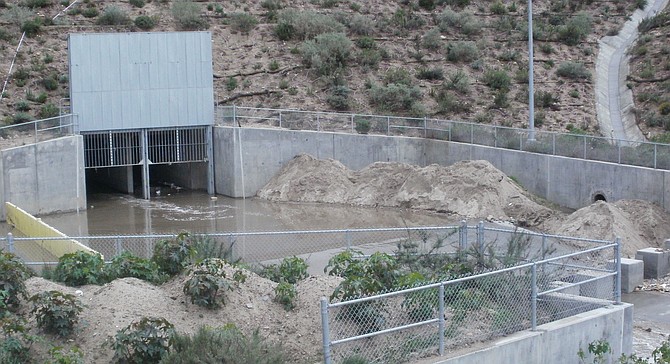
When newly assigned U.S. Border Patrol agents arrive at the Imperial Beach Station, one of the first things they are told: Don’t go in the Tijuana River. You don’t have to ever enter the water and you will not be reprimanded if you stop your pursuit at the river’s edge. But most border patrol agents will tell you that if they’re chasing a runner or they’re following tracks from a group, they’re going to continue the chase through the river.
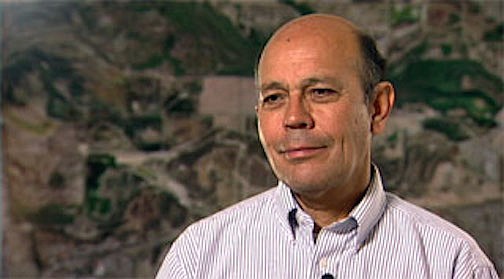
With the nearest bridge as far as a mile and a half away, there is no going around and catching up. So the agents end up in the water, and then wear whatever they picked up there for the rest of their shift. “Last week, some of our scoot guys (the elite ATV team) crossed the river and then they felt their feet burning inside their boots,” said Christopher Harris, an official with the National Border Patrol Council Local 1613.
“One guy took off his boot and found a rash starting. Any other place in the country, this valley would be a Superfund site.”
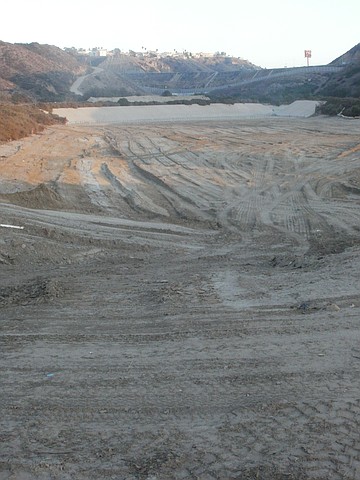
Like surfers who ride the waves by the IB Pier, border patrol agents tell stories about rashes and infections, and as recently as last week — following an incident on May 24 and the month of February when at least 140 million gallons of raw sewage came across the border and chugged through the river channel – agents were being affected by the waterborne filth. Harris says a supervisory agent was checking the grates in Goat Canyon when he was exposed to a noxious gas that left his lungs with chemical burns.
For the 400 or so agents out of the IB station, the river’s risks don’t end with the flow dries up. “It’s only the water that goes away,” Harris says. “The toxins and metals and solvents and pathogens and sewage become the dust that’s all over the valley. Anywhere the — I hesitate to call it water — has been, what was in it is still there.”
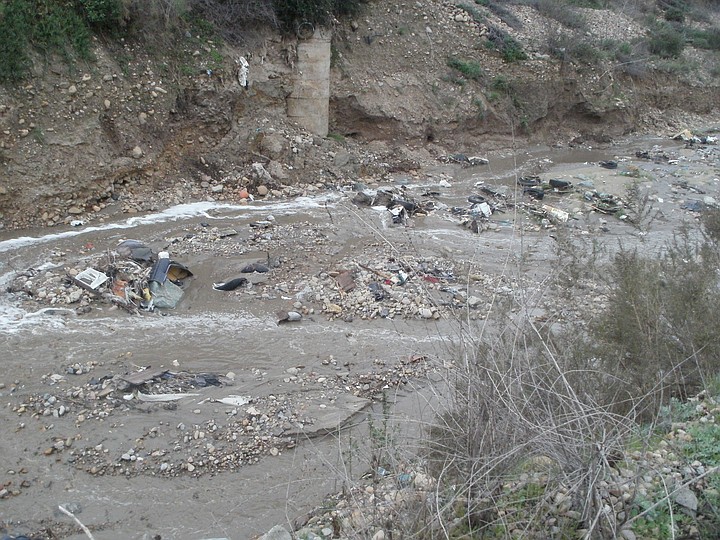
Border patrol agents spend more hours in close proximity to the filth than anyone else in the valley, and they have successfully sued for hazard pay as recognition of the danger chemicals and filth pose for them.
The mandate whereby new IB station agents get to stay out of the river and disclaimer arose from the settlement of that lawsuit.

When the river is running, it is a hazard simply because there’s water in it. Sometimes the water is merely street-polluted stormwater full of tiny grit the water rubs off Tijuana concrete. Of course, it’s full of the horrid stuff that ends up in stormwater everywhere – plastic bottles and Styrofoam containers, fecal bacteria and chemicals from cars and anything else on the pavement.
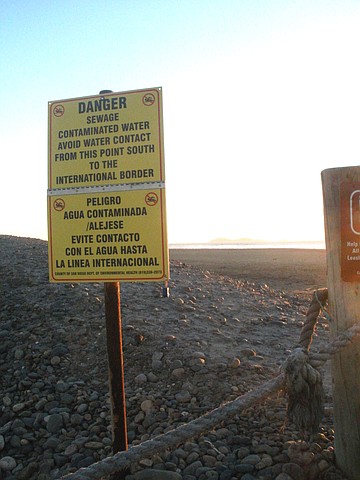
But there are times when what comes across the border in the concrete channels is mixed with raw sewage and times when it’s only raw sewage. Old-timers will tell you that, before the International Water and Boundary Commission built its sewer treatment plant, 14 million gallons of raw sewage flowed across the border every day.
This year, however, must have set some kind of record. The commission calculated the February to March continuous dump while Tijuana crews repaired collapsed sewer pipes at 143 million gallons — which would fill about 217 Olympic-size swimming pools.
At the end of their shifts, the agents are required to rinse off the Tahoes and Jeeps they drove through mud and muck and dust. The station provides high-pressure hoses to get the work done, Harris says. “I’ve had that crap end up in my mouth from spray flying off the truck,” Harris said. “You remember how the government treated the veterans who got sick from Agent Orange, and you worry about what will happen if five, ten years from now a lot of us start getting sick. A lot of those veterans died before the government admitted Agent Orange was a problem .”
Border patrol agents are the first people on this side of the border to see the sewage roll down the Tijuana river — through a concrete channel that has a yellow painted line marking the end of Mexico and the beginning of the U.S. There’s usually an agent keeping a watchful eye from above the channel — not for sewage, but for people trying to sneak into the U.S. (One of U.S. Immigration and Customs Enforcement’s deportation gates to Mexico is just west of the San Ysidro port of entry.) In the four miles between the channels and the ocean, there are no less than six places where liquids come into the U.S., according to Oscar Romo, an environmental engineer and professor of urban planning at UC San Diego. Many of those spots are busy places for illegal border crossing.
“The city of Tijuana is seven feet above sea level,” says Romo, who has a binational company that focuses on the Tijuana River watershed. “The Tijuana River Valley is at sea level…. Water is lazy — it goes with gravity.” Only one of those porous spots is the Tijuana River, Romo says. A tenth of a mile from the beach, just east of Monument Mesa, the border fence straddles Las Sauces/Yogurt Canyon, and water from Tijuana regularly rolls downhill into Border Field State Park, miles away from the river. Sometimes it’s that stormwater mix flowing down normally dry tributaries, other times, water or sewage pipes break and the contents simply run downhill . Water rushing into Goat Canyon, about a mile inland from the beach, has long bedeviled the state park. An unspeakable mix of trash, sewage and sediment carried by stormwater comes through the huge concrete culverts at the base of the most recent border fence.
There have been flows of opaque black water and red water that no one on either side of the border could source. The next porous spot is in Smuggler’s Gulch. Romo and his colleagues have tracked Goat and Smuggler’s canyons south into Tijuana for about five miles, and found waste from hospitals, industries, home construction, tires, and more.
Water comes in at Stewart’s Bridge and from a cluster of channels near the International Wastewater Treatment Plant, and from the Canon de Sainz, Romo says. The porous spots are porous for people trying to sneak into the U.S., which means border patrol agents routinely go into areas where water flows. Both Smuggler’s and Goat Canyon’s huge culverts have steel grates across them, but when water is coming in, the grates must be raised so they don’t jam up with trash and trap the liquids in Mexico. So if the grates are open, there are extra agents close by, being exposed to whatever is rushing through on any given day. They routinely search the sediment basins and drainage channels because migrants routinely hide in them, Harris says.
The liquid flowing through these channels and basins will evaporate or soak into the ground, but the cacophony of unknown substances remains on the ground agents tread every day. “You worry about the long-term effects for yourself and your family,” says one agent, who has more than a decade in the valley. “My wife and I are expecting (a baby) and it’s always in the back of your mind that there could be birth defects or illnesses that came from the stuff I brought home.”
For the first time since the 1994 lawsuit, the National Border Patrol Council Local 1613 is taking on the issue of agent safety from the liquids that flow into the U.S. They seem to have the tacit approval of the sector command, which can’t take a stand on the issue because of internal Department of Homeland Security politics. The sewage spills since February created that opportunity. Frustration and anger have been particularly sharp this year because of the extraordinary amounts of sewage and how slow the International Boundary and Water Commission was to notify people and confirm reports they received. Although Tijuana water officials have agreed to notify the commission of such spills, no one did this year and it’s not clear that the liaisons to the commission were even aware things had gone wrong until they were asked about it by sewage treatment plant manager Steve Smullen.
Border Patrol agents were the first to report the spills this year — the organization has a well-understood command structure, so agents in the field reported the sights and smells to their supervisors, who involved the IB station’s chief, Kathleen Scudder.
She expressed her anger on an email list the commission uses to notify people of problems with the flows. Frustration and anger have been particularly sharp this year because of the extraordinary amounts of sewage and how slow the commission was to notify people and confirm reports they received. Although Tijuana water officials have agreed to notify the commission of such spills, no one did this year and it’s not clear that the liaisons to the commission were even aware things had gone wrong until they were asked about it.
After a month and a half of relentless sewage spills caused by sewer main collapses, they reported the May 24th spill leaking water from Tijuana — this one caused by a break in a potable water line.
“I'd like to know what method was used to determine that it’s potable and would you drink it?” Scudder responded.
Most government officials and agencies in the valley have been routinely dismissive of border patrol reports and concerns, harking back to a vicious fight against the border fence constructed a few years ago. It was only built after Congress gave the feds permission to ignore environmental concerns, and plenty of resentment lingered over the fight on all sides. Whether it was putting dangerous obstacles on roads and trails, or planting Chollas cactus in the areas where the most nighttime arrests occur, or ignoring reports of resurgent wildlife the agents see, the keepers of the environmental faith haven’t been interested in hearing from the many agents who are in the area at all times. “I think we need to work to develop stronger partnership with the border patrol because they see things first, long before we know about them,” EPA environmental engineer Doug Liden said at a recent meeting.


When newly assigned U.S. Border Patrol agents arrive at the Imperial Beach Station, one of the first things they are told: Don’t go in the Tijuana River. You don’t have to ever enter the water and you will not be reprimanded if you stop your pursuit at the river’s edge. But most border patrol agents will tell you that if they’re chasing a runner or they’re following tracks from a group, they’re going to continue the chase through the river.

With the nearest bridge as far as a mile and a half away, there is no going around and catching up. So the agents end up in the water, and then wear whatever they picked up there for the rest of their shift. “Last week, some of our scoot guys (the elite ATV team) crossed the river and then they felt their feet burning inside their boots,” said Christopher Harris, an official with the National Border Patrol Council Local 1613.
“One guy took off his boot and found a rash starting. Any other place in the country, this valley would be a Superfund site.”

Like surfers who ride the waves by the IB Pier, border patrol agents tell stories about rashes and infections, and as recently as last week — following an incident on May 24 and the month of February when at least 140 million gallons of raw sewage came across the border and chugged through the river channel – agents were being affected by the waterborne filth. Harris says a supervisory agent was checking the grates in Goat Canyon when he was exposed to a noxious gas that left his lungs with chemical burns.
For the 400 or so agents out of the IB station, the river’s risks don’t end with the flow dries up. “It’s only the water that goes away,” Harris says. “The toxins and metals and solvents and pathogens and sewage become the dust that’s all over the valley. Anywhere the — I hesitate to call it water — has been, what was in it is still there.”

Border patrol agents spend more hours in close proximity to the filth than anyone else in the valley, and they have successfully sued for hazard pay as recognition of the danger chemicals and filth pose for them.
The mandate whereby new IB station agents get to stay out of the river and disclaimer arose from the settlement of that lawsuit.

When the river is running, it is a hazard simply because there’s water in it. Sometimes the water is merely street-polluted stormwater full of tiny grit the water rubs off Tijuana concrete. Of course, it’s full of the horrid stuff that ends up in stormwater everywhere – plastic bottles and Styrofoam containers, fecal bacteria and chemicals from cars and anything else on the pavement.

But there are times when what comes across the border in the concrete channels is mixed with raw sewage and times when it’s only raw sewage. Old-timers will tell you that, before the International Water and Boundary Commission built its sewer treatment plant, 14 million gallons of raw sewage flowed across the border every day.
This year, however, must have set some kind of record. The commission calculated the February to March continuous dump while Tijuana crews repaired collapsed sewer pipes at 143 million gallons — which would fill about 217 Olympic-size swimming pools.
At the end of their shifts, the agents are required to rinse off the Tahoes and Jeeps they drove through mud and muck and dust. The station provides high-pressure hoses to get the work done, Harris says. “I’ve had that crap end up in my mouth from spray flying off the truck,” Harris said. “You remember how the government treated the veterans who got sick from Agent Orange, and you worry about what will happen if five, ten years from now a lot of us start getting sick. A lot of those veterans died before the government admitted Agent Orange was a problem .”
Border patrol agents are the first people on this side of the border to see the sewage roll down the Tijuana river — through a concrete channel that has a yellow painted line marking the end of Mexico and the beginning of the U.S. There’s usually an agent keeping a watchful eye from above the channel — not for sewage, but for people trying to sneak into the U.S. (One of U.S. Immigration and Customs Enforcement’s deportation gates to Mexico is just west of the San Ysidro port of entry.) In the four miles between the channels and the ocean, there are no less than six places where liquids come into the U.S., according to Oscar Romo, an environmental engineer and professor of urban planning at UC San Diego. Many of those spots are busy places for illegal border crossing.
“The city of Tijuana is seven feet above sea level,” says Romo, who has a binational company that focuses on the Tijuana River watershed. “The Tijuana River Valley is at sea level…. Water is lazy — it goes with gravity.” Only one of those porous spots is the Tijuana River, Romo says. A tenth of a mile from the beach, just east of Monument Mesa, the border fence straddles Las Sauces/Yogurt Canyon, and water from Tijuana regularly rolls downhill into Border Field State Park, miles away from the river. Sometimes it’s that stormwater mix flowing down normally dry tributaries, other times, water or sewage pipes break and the contents simply run downhill . Water rushing into Goat Canyon, about a mile inland from the beach, has long bedeviled the state park. An unspeakable mix of trash, sewage and sediment carried by stormwater comes through the huge concrete culverts at the base of the most recent border fence.
There have been flows of opaque black water and red water that no one on either side of the border could source. The next porous spot is in Smuggler’s Gulch. Romo and his colleagues have tracked Goat and Smuggler’s canyons south into Tijuana for about five miles, and found waste from hospitals, industries, home construction, tires, and more.
Water comes in at Stewart’s Bridge and from a cluster of channels near the International Wastewater Treatment Plant, and from the Canon de Sainz, Romo says. The porous spots are porous for people trying to sneak into the U.S., which means border patrol agents routinely go into areas where water flows. Both Smuggler’s and Goat Canyon’s huge culverts have steel grates across them, but when water is coming in, the grates must be raised so they don’t jam up with trash and trap the liquids in Mexico. So if the grates are open, there are extra agents close by, being exposed to whatever is rushing through on any given day. They routinely search the sediment basins and drainage channels because migrants routinely hide in them, Harris says.
The liquid flowing through these channels and basins will evaporate or soak into the ground, but the cacophony of unknown substances remains on the ground agents tread every day. “You worry about the long-term effects for yourself and your family,” says one agent, who has more than a decade in the valley. “My wife and I are expecting (a baby) and it’s always in the back of your mind that there could be birth defects or illnesses that came from the stuff I brought home.”
For the first time since the 1994 lawsuit, the National Border Patrol Council Local 1613 is taking on the issue of agent safety from the liquids that flow into the U.S. They seem to have the tacit approval of the sector command, which can’t take a stand on the issue because of internal Department of Homeland Security politics. The sewage spills since February created that opportunity. Frustration and anger have been particularly sharp this year because of the extraordinary amounts of sewage and how slow the International Boundary and Water Commission was to notify people and confirm reports they received. Although Tijuana water officials have agreed to notify the commission of such spills, no one did this year and it’s not clear that the liaisons to the commission were even aware things had gone wrong until they were asked about it by sewage treatment plant manager Steve Smullen.
Border Patrol agents were the first to report the spills this year — the organization has a well-understood command structure, so agents in the field reported the sights and smells to their supervisors, who involved the IB station’s chief, Kathleen Scudder.
She expressed her anger on an email list the commission uses to notify people of problems with the flows. Frustration and anger have been particularly sharp this year because of the extraordinary amounts of sewage and how slow the commission was to notify people and confirm reports they received. Although Tijuana water officials have agreed to notify the commission of such spills, no one did this year and it’s not clear that the liaisons to the commission were even aware things had gone wrong until they were asked about it.
After a month and a half of relentless sewage spills caused by sewer main collapses, they reported the May 24th spill leaking water from Tijuana — this one caused by a break in a potable water line.
“I'd like to know what method was used to determine that it’s potable and would you drink it?” Scudder responded.
Most government officials and agencies in the valley have been routinely dismissive of border patrol reports and concerns, harking back to a vicious fight against the border fence constructed a few years ago. It was only built after Congress gave the feds permission to ignore environmental concerns, and plenty of resentment lingered over the fight on all sides. Whether it was putting dangerous obstacles on roads and trails, or planting Chollas cactus in the areas where the most nighttime arrests occur, or ignoring reports of resurgent wildlife the agents see, the keepers of the environmental faith haven’t been interested in hearing from the many agents who are in the area at all times. “I think we need to work to develop stronger partnership with the border patrol because they see things first, long before we know about them,” EPA environmental engineer Doug Liden said at a recent meeting.
Comments